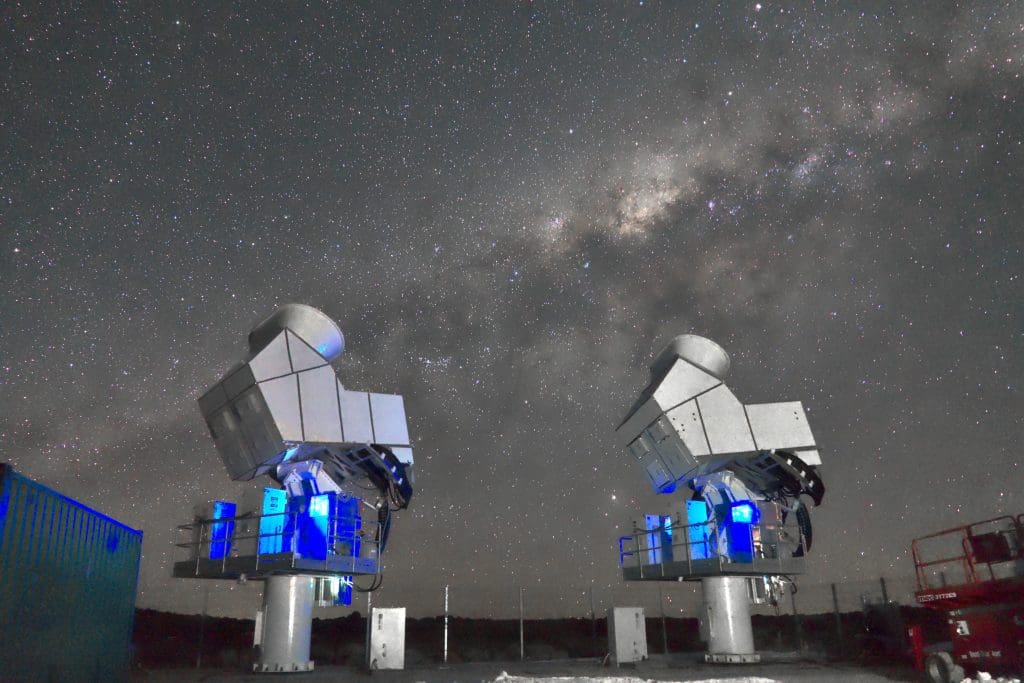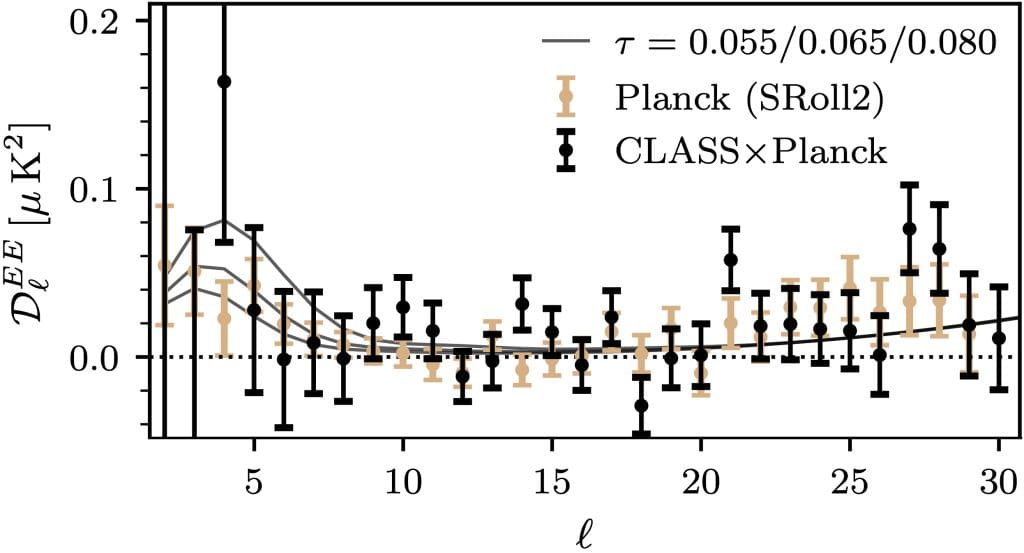A Unique View of the Heavens
Welcome to the public website of the Cosmology Large Angular Scale Surveyor (CLASS)! From high atop a mountain in Northern Chile, CLASS uses polarized light from the Big Bang, the cosmic microwave background (CMB), to measure when the first stars lit up the universe, an epoch called cosmic dawn or reionization. Additionally with CLASS we can study our solar system and galaxy as well as better understand results on neutrinos and dark energy. The measurement requires cutting-edge technology and data analysis to detect the faint signal. Students and early-career researchers are the core of the CLASS team and go on to exciting careers in science and technology. This site is a clearinghouse for popular media and professional publications on CLASS as well as data, code, student theses, and educational materials. You can also check out the CLASS team and follow us on X or Bluesky!



First CLASS Results on Optical Depth
In early 2025, CLASS announced a new measurement of the so-called “optical depth to reionization,” the probability that a CMB photon interacts with electrons freed from intergalactic gas by starlight. CLASS data, in combination with data from the Planck and WMAP telescopes, implies an optical depth of 𝝉=0.053+0.018-0.019, consistent with previous measurements. This result will improve with more CLASS data and upgrades to the telescopes!
Acknowledgments
We acknowledge the National Science Foundation Division of Astronomical Sciences for their support of CLASS under Grant Numbers 0959349, 1429236, 1636634, 1654494, 2034400, 2109311, and 2442928. The CLASS project employs detector technology developed under several NASA grants. Detector development work at JHU was funded by NASA cooperative agreement 80NSSC19M0005. Data analysis for CLASS is conducted using computational resources of Advanced Research Computing at Hopkins (ARCH). We further acknowledge the very generous support of Jim Murren and Heather Miller (JHU A&S ’88), Matthew Polk (JHU A&S Physics BS ’71), David Nicholson, and Michael Bloomberg (JHU Engineering ’64). CLASS is located in the Parque Astronómico Atacama in northern Chile under the auspices of the Agencia Nacional de Investigación y Desarrollo (ANID).
